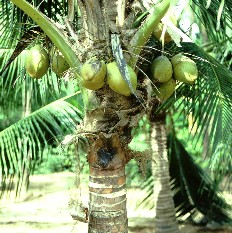http://english.ohmynews.com/articleview/article_view.asp?no=345914&rel_no=1
Global warming is engulfing the biosphere at a rapid pace, setting in
motion strange climatic changes. Humans are paying the price of messing
with the environment over the centuries, while continuing to do so.
Pollution levels are at an all-time high in India's capital, Delhi, with
other metro regions like Mumbai and Calcutta vying for second place.
The increasing industrial and residential use of diesel generators is
adding to the global warmup, even at the village level, while the search
for alternative fuels continues unabated.
The cultivation of the jatropha plant in the western States of Goa and
Maharashtra and dhaincha in the northeastern State of Bihar is
increasingly being promoted as promising an alternative to diesel fuel
in India.
In Goa, biodiesel derived from Jatropha curcas, locally known as
"erond," is becoming more widespread. Fr. Inacio Almeida, of Pilar, Goa,
runs the Nature Farm of the Society of Pilar (or Society of the
Missionaries of St. Francis Xavier-ed.) and is a leading popularizer of
jatropha as a feedstock for the production of biodiesel. Jatropha until
recently was routinely used as stumps for damming paddy fields and orchards.
"One liter of fuel can be extracted from 3 kg of jatropha seeds," says
Fr. Almeida. Among the developments he envisions is for "each village in
Goa to have its own jatropha plantation and extraction machinery."[*]
Generators using refined diesel have latterly been resorted to by
householders, as well as small businesses, in Goa, in lieu of tapping
into an increased central electrical generating capacity. This reliance
is expected to change in the next few years, as jatropha biodiesel
predominates.
Kanti Naik runs a small ice cream parlor in Assolna village in south
Goa. As elsewhere in Goa the electrical power supply here is
undependable, so he relies for backup power on a small, portable diesel
generator worth INR 10,000 (US$228). Nearby, Alexander Barbosa also has
recourse to a similar diesel generator for his cold-storage meat warehouse.
For these two businessmen the diesel generator has become a necessity,
and increasing numbers of Goan householders have been using them to
power their TV sets.
"For many villages it's a case of either clean air or television," says
Nandita Mongia, chief of the U.N. Development Program (UNDP) Regional
Energy Program for Asia and the Pacific.
Figures arrived at by The Energy and Resources Institute (TERI) in New
Delhi point to a mushrooming of the number of these diesel generators
throughout India.
The diesel-powered generator has been a hit with people across the
country. A liter of refined diesel costs INR 13 (US$.30) vs INR 50
(US$1.14) for gasoline.[**]
Pretty cheap, compared with Western countries, given that India is not a
major producer of oil.
India imports most of its petroleum products, which are heavily
subsidized before they reach the retail market, especially gasoline,
diesel fuel and kerosene.
In neighboring Maharashtra the State government plans to allocate 30,000
hectares or 74,000 acres for jatropha cultivation to private sector
business; for example, Reliance Industries is looking to the State to
provide land for jatropha cultivation. As a public sector investment,
the Maharashtra Government plans to cultivate jatropha on 60,000
hectares or 148,000 acres of State-owned land.[***]
In the eastern State of Bihar, the small village of Baharbari,
sandwiched between Nepal and Bangladesh, has taken the lead in using
another alternative fuel, dhaincha, a weed that provides a source of
biomass, taking the place of wood from shrubs and trees. This is a
project that has attracted World Bank support, as offering a cheaper
source of electricity compared with diesel.
A challenge to be overcome in popularizing alternative energy sources is
getting the message across to the masses, which requires a sustained
campaign by local leaders acting through religious institutions and
schools to educate the younger generation.
If dhaincha and jatropha meet even one percent of India's growing fuel
needs, then this will be a great achievement.
--

No comments:
Post a Comment